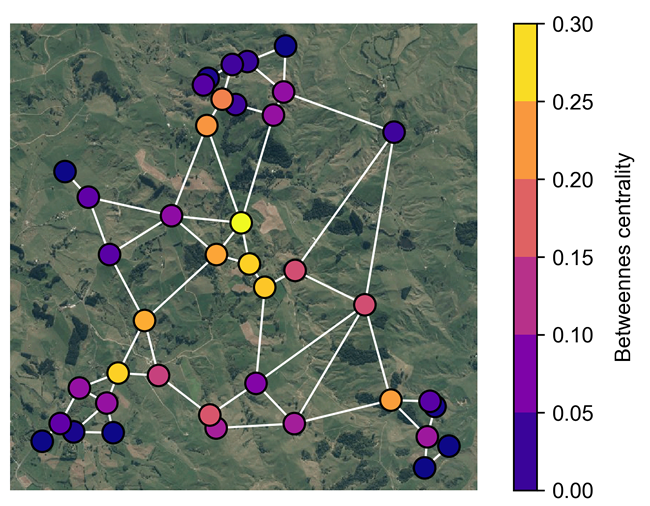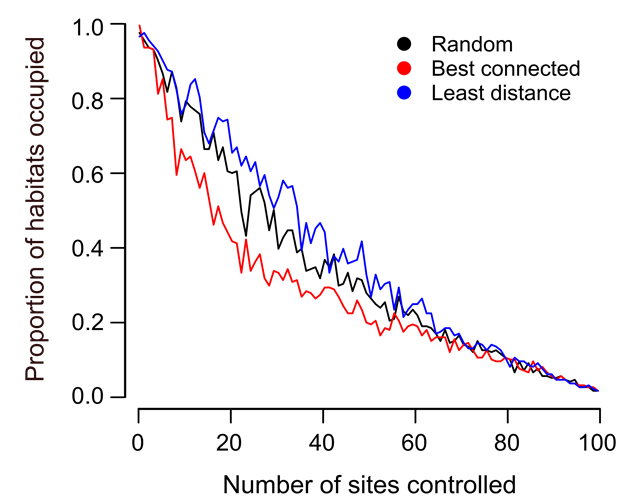Prioritising pest control based on network connectivity
Resources for the control of invasive pests can be prioritised for certain sites in different ways, but one approach that has not received a lot of attention is prioritising sites based on landscape connectivity. This approach considers that as pests move around a landscape, targeting the parts of the landscape that act as critical junctions in a network of movement may help break a population into smaller more isolated sub-populations that are easier to control or eradicate.
Extending this analogy, imagine a road network you drive your car around. You know that some junctions are much busier than others because they connect many locations and are therefore more critical in maintaining the connectivity of the network. Traffic engineers use network connectivity models to find junctions in networks that are most important for allowing traffic to keep flowing. But if cars are viewed as invasive pests and roads as dispersal routes, then these same network connectivity methods could be used to find the critical junctions in a network of the movements of such pests. While traffic engineers protect critical road junctions to maintain traffic flow, pest managers could target their critical network junctions to reduce the spread of invasive pests.

Tom Etherington and his colleagues wanted to assess whether approaching invasive pest control using network connectivity could be an effective management technique. To do this in the real world would be difficult and costly because it would involve continuous monitoring of an invasive species population over large areas for long periods of time. Therefore, Tom and his colleagues used computer simulations of a virtual pest population breeding and dispersing around a network of habitat patches, upon which were imposed different control methods: one where control was random, one that controlled pests in a habitat close to another habitat, and one based on a network connectivity measure called ‘betweenness centrality’. Betweenness centrality works by calculating the most direct dispersal route between all combinations of habitat patches, with the habitat patches occurring in more dispersal routes having a higher betweenness centrality (Figure 1).

The modelling indicated that using network connectivity to prioritise the control of invasive pests can be a more effective strategy than traditional pest control to reduce the size of a population of pests and the number of invaded sites. For example, using a network connectivity approach will have a greater impact for a given number of control sites, or achieve the same level of impact with fewer control sites (Figure 2), both of which indicate greater control efficiencies. However, these findings only apply when a network view of the landscape is appropriate, invasive pests are in the early stage of (re)invasion, and long-distance dispersal is limited. While encouraging, the findings are still theoretical, but future work will hopefully enable them to be examined in real landscapes.
Tom Etherington
etheringtont@landcareresearch.co.nz
George Perry (University of Auckland)
Kirk Moloney (Iowa State University)
